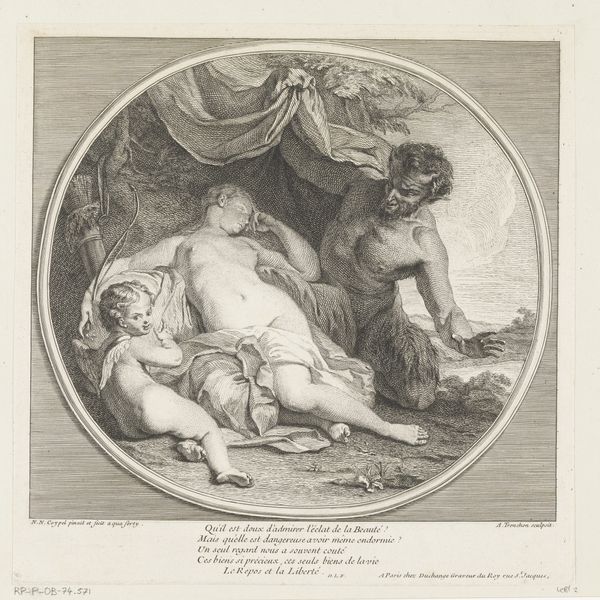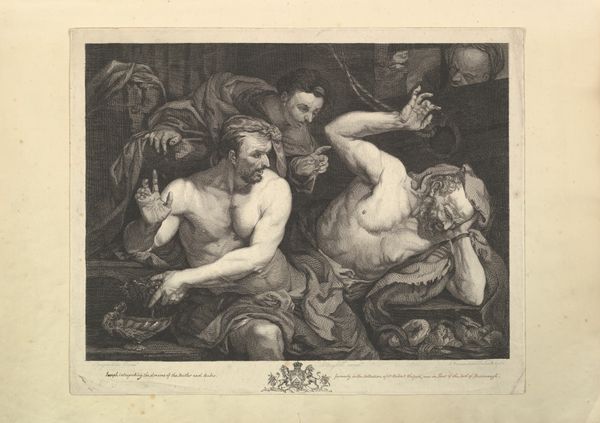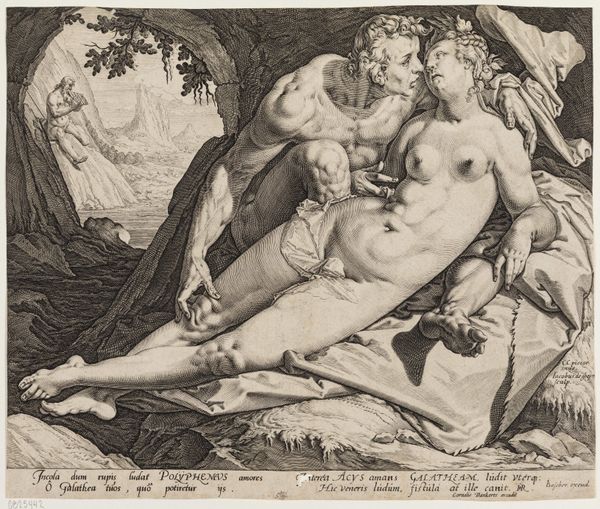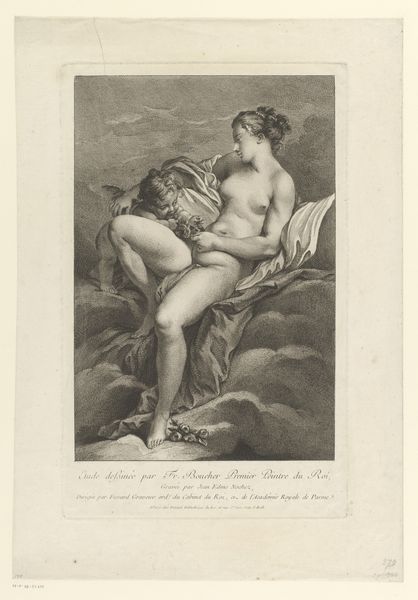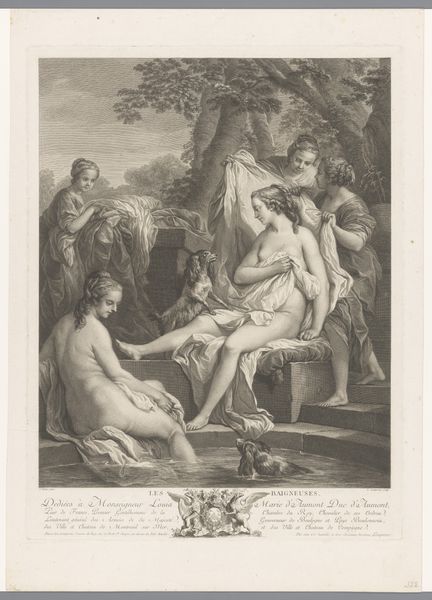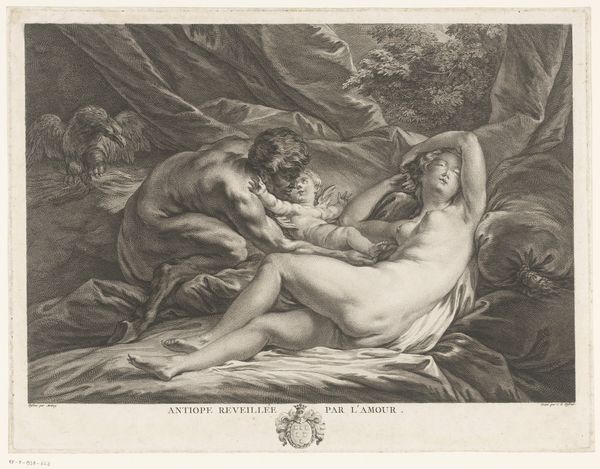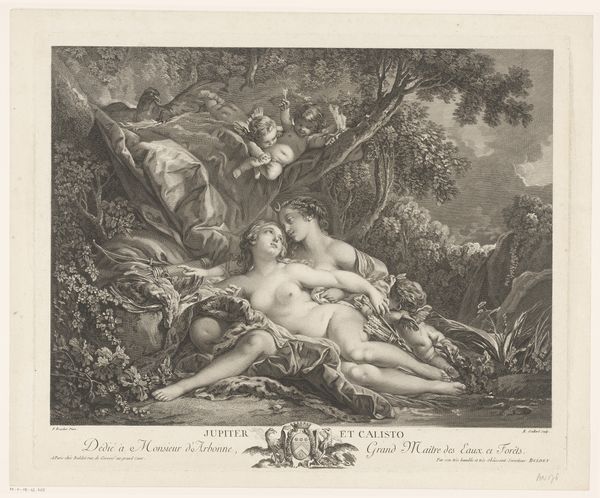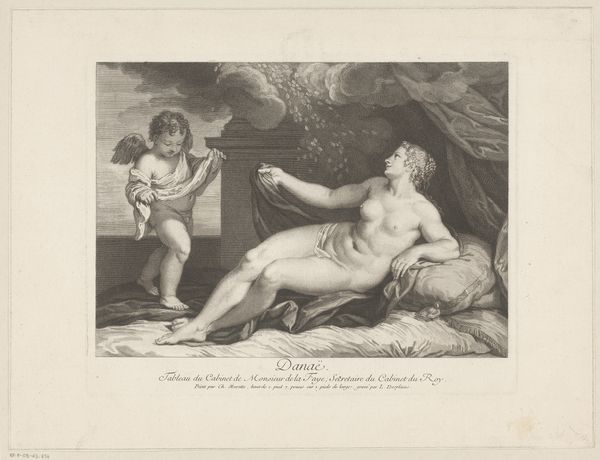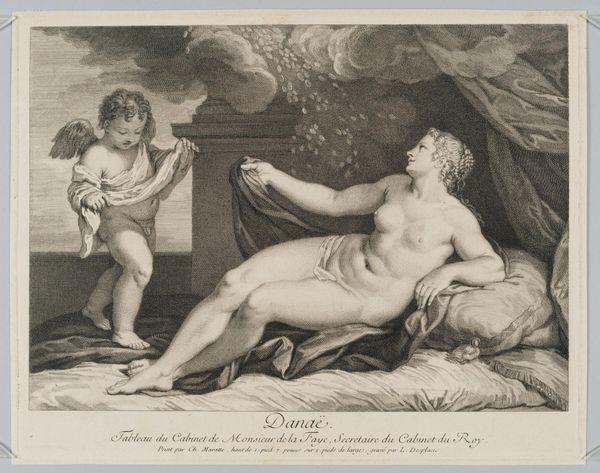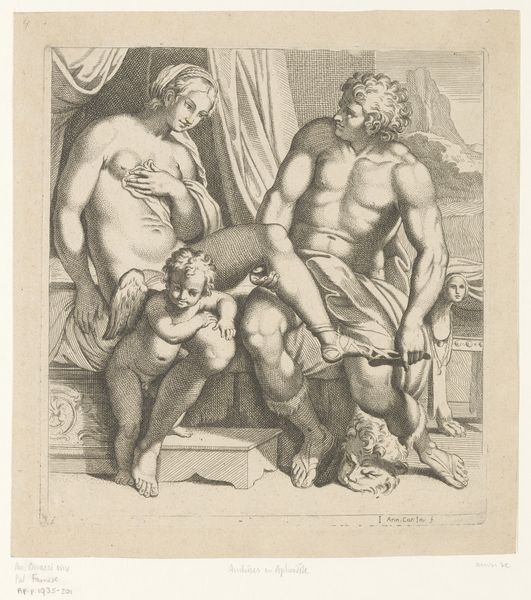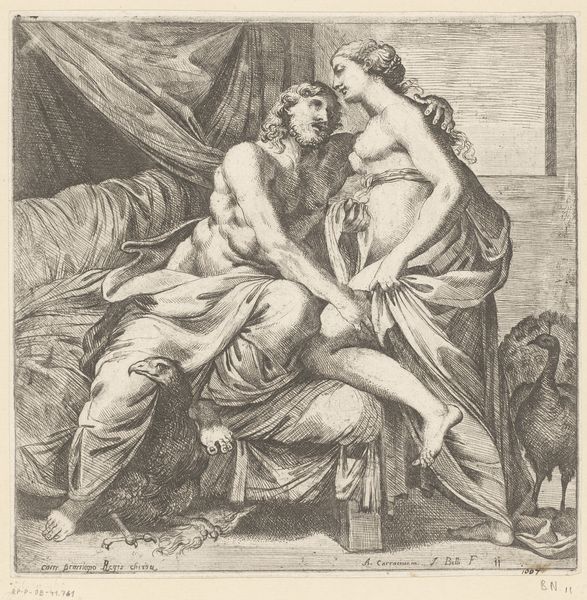
engraving
#
baroque
#
caricature
#
figuration
#
history-painting
#
nude
#
engraving
Dimensions: height 385 mm, width 445 mm
Copyright: Rijks Museum: Open Domain
Editor: This is "Jupiter en Antiope," an engraving from 1758 by Etienne Fessard, after a painting by Antoine Coypel. The scene has a slightly mischievous feel, with a leering satyr figure gazing upon a sleeping nude woman. What catches your eye in this piece? Curator: Mischievous is one word for it! My immediate reaction is to giggle, not going to lie! It’s hard to take it seriously, isn't it? Though, the story it portrays is the stuff of classical mythology. Do you know the myth? Jupiter, in disguise, wooing Antiope. Coypel gives it a very French, Rococo twist—that's why Fessard's engraving, like a stage set with that heavy drapery...almost obscuring the actual act of love. Editor: It’s definitely theatrical. Is that why the satyr seems to be almost unveiling her? Curator: Precisely. A satyr observing is, by definition, comedic in baroque iconography. The real joke, perhaps, is the very human Jupiter behind the mask – desiring mortal pleasures like everyone else. It kind of democratises the gods. What did you expect going in? And, after, are there any shifts? Editor: I came expecting high drama, something… grander. I leave finding it quite playful, a little naughty. Thanks. Curator: Me too. The humour invites me to think twice about heroism, desire, or idealisation, as rendered by artists in 1758, no less! Thanks.
Comments
No comments
Be the first to comment and join the conversation on the ultimate creative platform.
